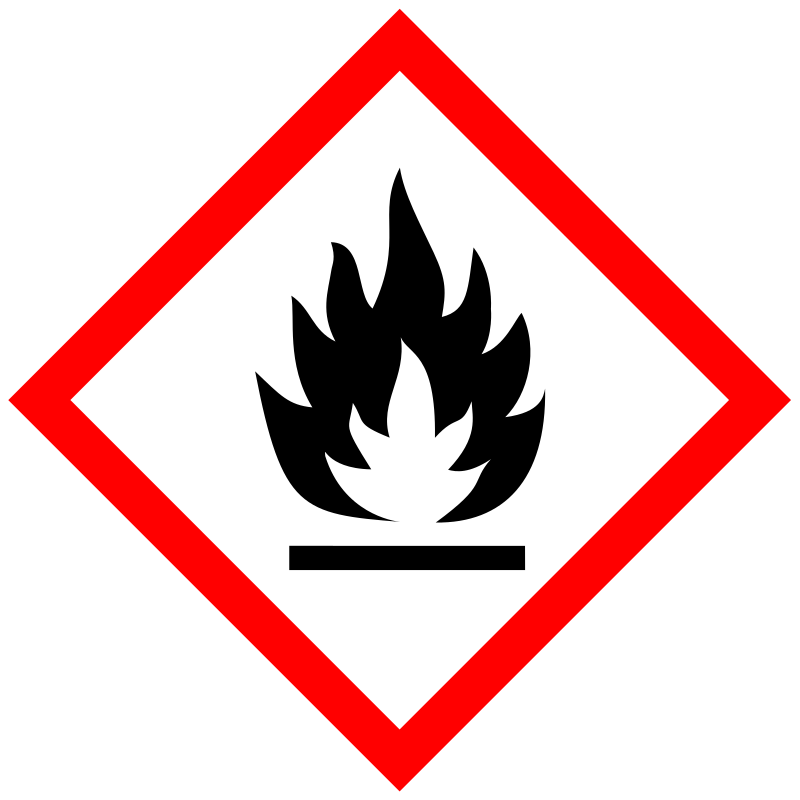D1039 | p-benzoquinone dioxime
| Toxicity | Dose | Time | Species | Model | Method | Action | Positive criterion | Reference |
|---|---|---|---|---|---|---|---|---|
| MEMBRANE POTENTIAL | 43.30±14.86 | human | qHTS-HepG2 | MMP assay | decrease | IC50 | 163 | |
| MEMBRANE POTENTIAL | 25.12 | human | HepG2 | MMP assay | decrease | IC50 | 163 | |
| MEMBRANE POTENTIAL | rat | hepatocytes | MMP assay | Negative | IC50 | 163 | ||
| Pictogram | Signal | Statements | Precautionary Statement Codes |
|---|---|---|---|
     |
Danger |
Aggregated GHS information provided by 149 companies from 13 notifications to the ECHA C&L Inventory. Each notification may be associated with multiple companies. H228 (45.64%): Flammable solid [Danger Flammable solids] H301 (13.42%): Toxic if swallowed [Danger Acute toxicity, oral] H302 (86.58%): Harmful if swallowed [Warning Acute toxicity, oral] H315 (49.66%): Causes skin irritation [Warning Skin corrosion/irritation] H317 (16.78%): May cause an allergic skin reaction [Warning Sensitization, Skin] H319 (66.44%): Causes serious eye irritation [Warning Serious eye damage/eye irritation] H335 (44.97%): May cause respiratory irritation [Warning Specific target organ toxicity, single exposure Respiratory tract irritation] H341 (18.12%): Suspected of causing genetic defects [Warning Germ cell mutagenicity] H351 (48.32%): Suspected of causing cancer [Warning Carcinogenicity] H411 (17.45%): Toxic to aquatic life with long lasting effects [Hazardous to the aquatic environment, long-term hazard] Information may vary between notifications depending on impurities, additives, and other factors. The percentage value in parenthesis indicates the notified classification ratio from companies that provide hazard codes. Only hazard codes with percentage values above 10% are shown. |
P201, P202, P210, P240, P241, P261, P264, P270, P271, P272, P273, P280, P281, P301+P310, P301+P312, P302+P352, P304+P340, P305+P351+P338, P308+P313, P312, P321, P330, P332+P313, P333+P313, P337+P313, P362, P363, P370+P378, P391, P403+P233, P405, and P501; (The corresponding statement to each P-code can be found at the GHS Classification page.) |
  |
Warning |
H302: Harmful if swallowed [Warning Acute toxicity, oral] H373: Causes damage to organs through prolonged or repeated exposure [Warning Specific target organ toxicity, repeated exposure] |
P260, P264, P270, P301+P312, P314, P330, and P501; (The corresponding statement to each P-code can be found at the GHS Classification page.) |
| Organism | Test type | Route | Dose (normalized dose) | Effect | Source |
|---|---|---|---|---|---|
| mouse | LD50 | oral | 1420mg/kg (1420mg/kg) | Gigiena i Sanitariya. For English translation, see HYSAAV. Vol. 29(10), Pg. 15, 1964. | |
| rat | LD50 | oral | 464mg/kg (464mg/kg) | Progress Report for Contract No. NIH-NCI-E-C-72-3252, Submitted to the National Cancer Institute by Litton Bionetics, Inc. Vol. NCI-E-C-72-3252, Pg. 1973, | |
| (1E,4E)-benzoquinone dioxime | 1,4-Benzochinondioxim | 1,4-Benzochinondioxim [Czech] |
| 1,4-Benzoquinone dioxime | 1,4-benzoquinonedioxime | 1,4-cyclohexadienedione dioxime |
| 1,4-di(hydroxyimino)cyclohexa-2,5-diene | 105-11-3 | 2,4-dione, dioxime |
| 2,5-Cyclohexadiene-1,4-dione, 1,4-dioxime | 2,5-Cyclohexadiene-1,4-dione, dioxime | 2,5-cyclohexadiene-1,4-dione dioxime |
| 4-07-00-02074 (Beilstein Handbook Reference) | AB0034561 | ACMC-2098eu |
| AI3-52518 | AK-47707 | AKOS015901106 |
| AKOS015920447 | ANW-15172 | AS-19482 |
| Actor Q | B0090 | BR-47707 |
| BRN 2043234 | Benzo-1,4-quinone dioxime | Benzo-1,4-quinone dioxime # |
| Benzoquinone dioxime | C-01782 | C19345 |
| CAS-105-11-3 | CCRIS 549 | CHEBI:82404 |
| CHEMBL1585396 | CTK0H6045 | DSSTox_CID_1222 |
| DSSTox_GSID_21222 | DSSTox_RID_76020 | DTXSID8021222 |
| Dibenzo PQD | Dioxime 1,4-cyclohexadienedione | Dioxime 2,4-dione |
| Dioxime 2,5-cyclohexadiene-1,4-dione | Dioxime p-benzoquinone | EINECS 203-271-5 |
| FCH1411688 | FCH4121125 | FT-0606774 |
| G-M-F | HSDB 2866 | KS-00000VOH |
| KSC176A4L | LNHURPJLTHSVMU-CGXWXWIYSA-N | MCULE-6082720028 |
| MFCD00063636 | MGE6YH92Q2 | N-(4-nitrosophenyl)hydroxylamine |
| NCGC00091127-01 | NCGC00091127-02 | NCGC00248444-01 |
| NCGC00248585-01 | NCGC00257827-01 | NCI-C03850 |
| NSC 14433 | NSC 4774 | NSC-14433 |
| NSC-4774 | NSC14433 | NSC4774 |
| P-BENZOQUINONE DIOXIME | P-BENZOQUINONE DIOXIME (SEE ALSO: P-BENZOQUINONE MONOOXIME (CAS 637-62-7)); | PQD |
| Paraquinondioxime | Q27155923 | QDO |
| Quinone dioxime | RT-000454 | SC-46551 |
| SCHEMBL8005268 | SCHEMBL93568 | ST2419770 |
| ST50988064 | TRA0064919 | Tox21_200273 |
| UNII-MGE6YH92Q2 | Vulnoc GM | W-108793 |
| WLN: L6Y DYJ AUNQ DUNQ | X8737 | ZINC100301795 |
| ZINC3875735 | [1,4-Phenylenebis(iminooxy)]radical | dioxime p-benzoquinone |
| p-Benzo Quinone Dioxime | p-Benzoquineone dioxime | p-Benzoquinone dioxime, moistened with ca. 30% water |
| p-Benzoquinone dioxime, technical, >=90% (TLC) | p-Benzoquinone, dioxime | p-Benzoquinonedioxime |
| p-Nitrosophenylhydroxylamin | p-Quinone dioxime | p-Quinone oxime |
| para-Benzoquinone dioxime | para-Quinone oxime |
| CAS Number | 100045-83-8, 105-11-3 |
| PubChem Compound | 7737 |

